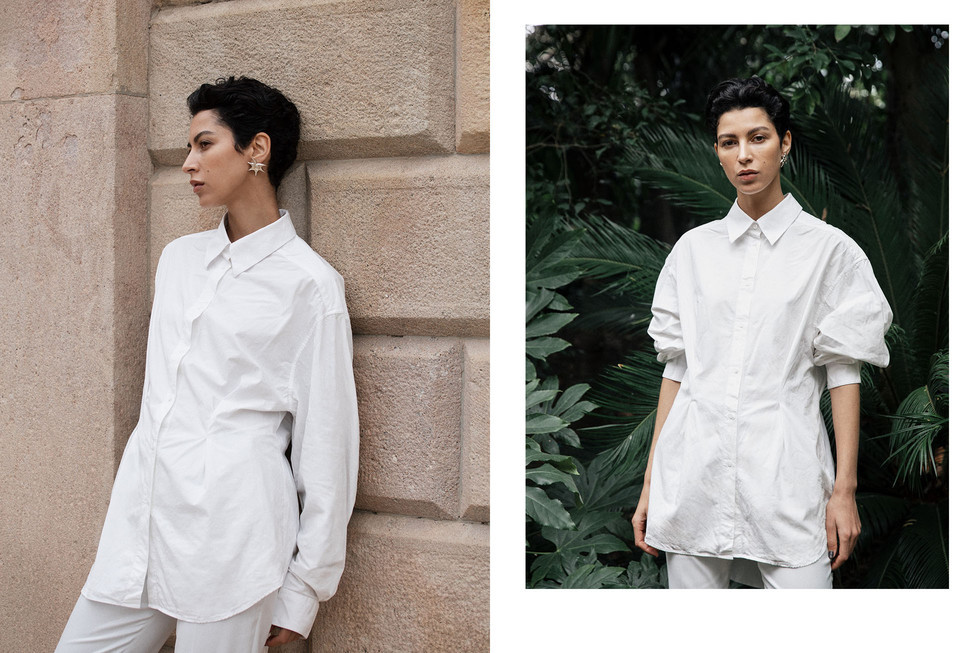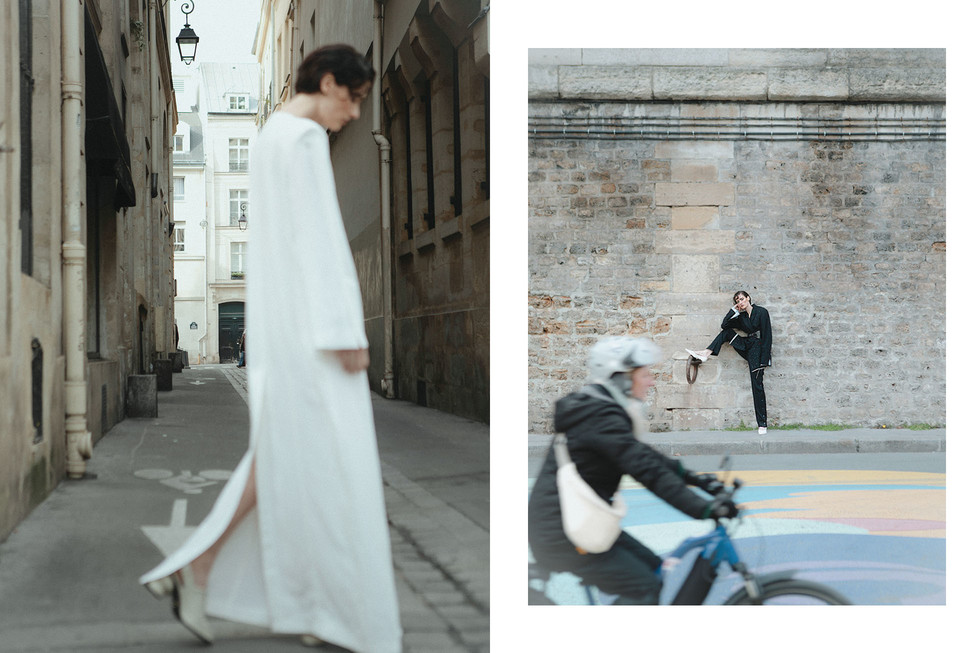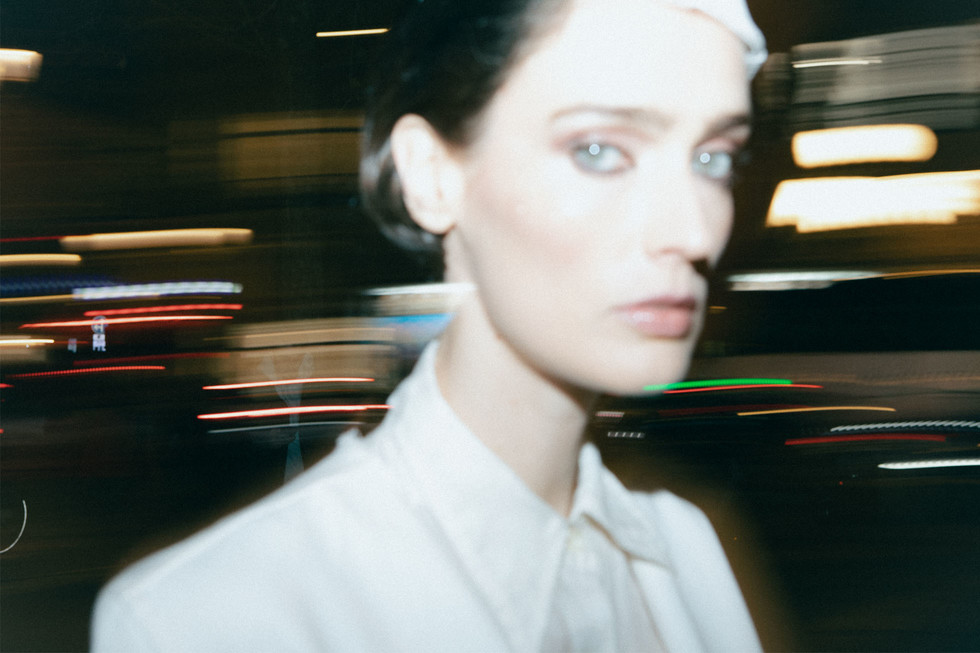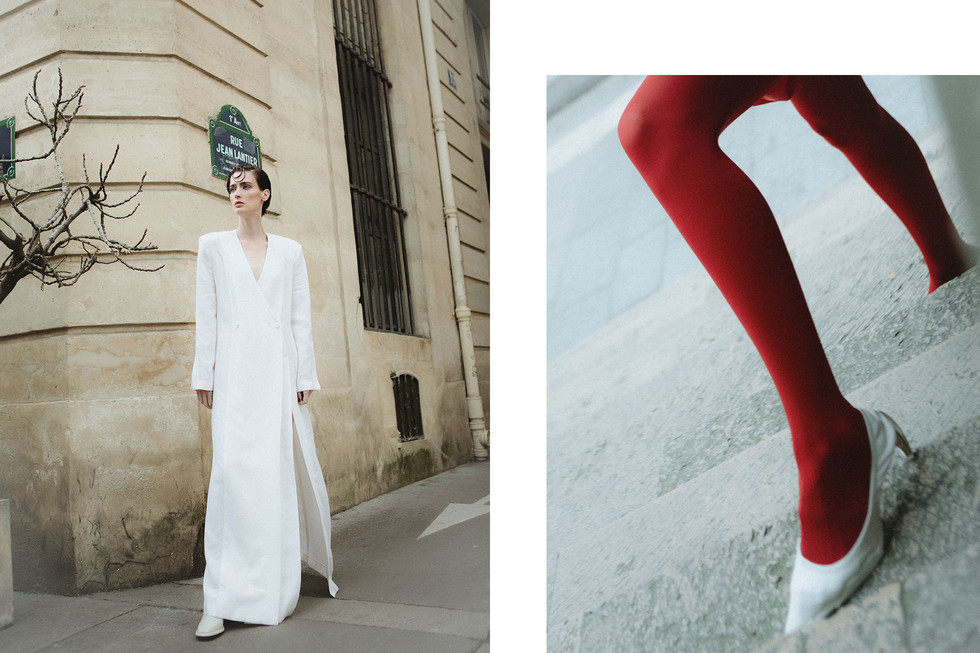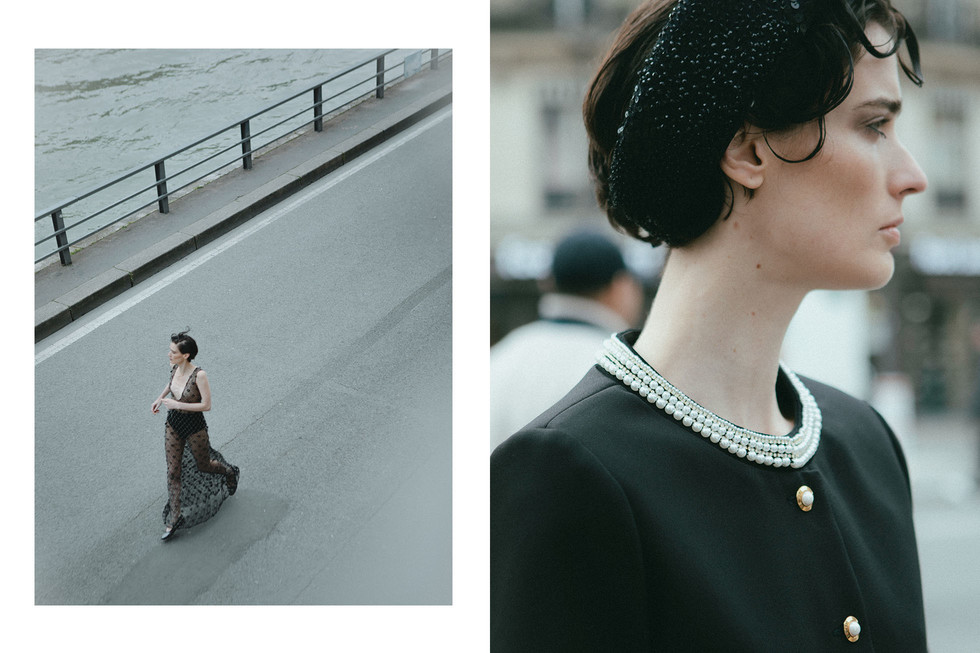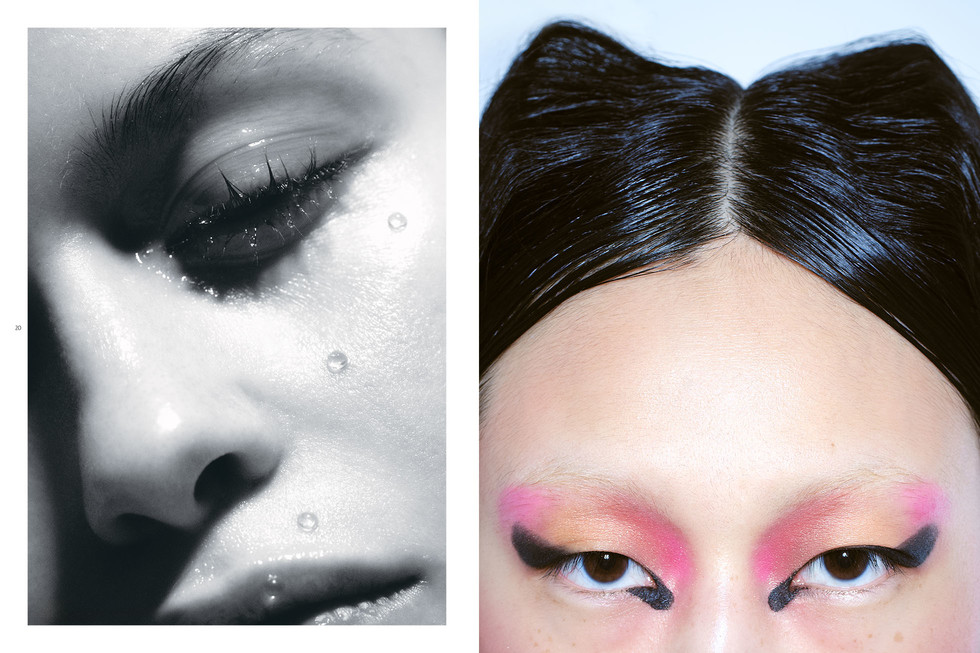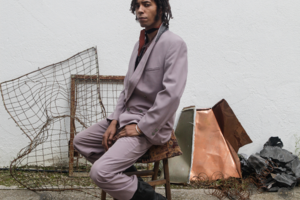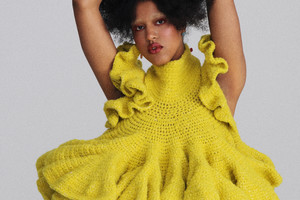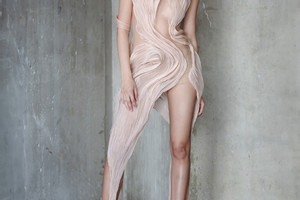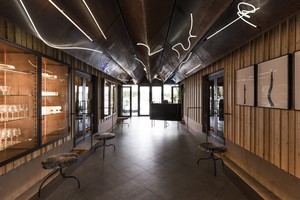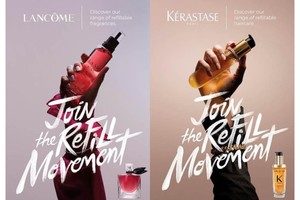Shake It Out, An Interview with Vinchy Chan
Written by Maya Avram by Sandra MyhrbergWhile creative talent and a discerning eye are stable stakes to succeeding in fashion, strategy is equally crucial to establishing a sustainable career and one most industry players unfortunately lack. One reason is that fashion designers are becoming increasingly individualistic, and consequently, reluctant to ask for support. This starts as early as fashion school, where educators encourage emerging talent to see themselves as bitter competitors rather than potential collaborators; it goes on to impact small-scale businesses who can’t seem to handle their admin (cult-favourites like Y/Project, Christopher Kane and The Vampire’s Wife have been forced to shut down in recent years.)
garment by’s premise, therefore, is a simple yet promising one: entrust the business side of things to the startup’s co-founders, former Strategy Consultant Vinchy Chan and Operations Officer Ana Ciobanu, and focus instead on designing the ‘Icons’, the platform’s range of timeless clothing essentials. Each Icon piece is created with consideration of research data and insight, and ethically produced by garment by’s network of vetted suppliers and manufacturers in China. The result? A thoughtful collection of bespoke garments meant to last a lifetime.
I caught up with Chan ahead of the spring launch of the ‘Love Shirt’, celebrating the noblest emotion of all.
Maya Avram: This issue’s theme is ‘Alchemy of Fates,’ or how we break down conforms to build something new that realigns us with the right path. Do you feel that resonates with garment by’s mission?
Vinchy Chan: 100 percent. As an outsider to fashion, I see things with a fresh perspective, including practices that don’t serve us anymore. I respect that big brands have to make sure, in this downturn, that they can protect their revenue in line with the matrixes they know are going to sell, but that is just adhering to conform. It tells us that fashion is about creativity, but also that there are many implicit rules. As a business, garment by is ready to break away from those rules and those legacy systems that don’t serve us anymore.
MA: What does your development process look like, and how does it challenge those systems?
VC: One of the biggest problems of the current system is overstock. Stock is planned and produced usually a year ahead, and at the six-month mark, you need to put in orders with your sourcing and production partners, which many brands do without any insight or data. So they often overproduce and create merchandise that is killing their business. 70 percent of designer labels’ cash gets tied up in stock they never know if they’ll be able to sell. That cost is priced in for consumers — ever wonder why a designer shirt costs £800? Imagine if we didn’t have to pay that premium. You could shave 30 to 50 per cent off the buying price, which is great for consumers in this economic downturn. Not to mention that stock is the biggest environmental polluter, with 30 per cent of overstock going to landfill. Consumers nowadays are more and more aware of those issues and the impact of their buying behaviours. That’s why we adopted an on-demand model, to empower designer labels to only produce what’s sold. We are now able to deliver the product within four weeks, but hopefully, with tech and data innovation, we will eventually be able to deliver it within two weeks.
MA: How did you come to create the Icon collection?
VC: The Icon collection came from market insight. We are looking into each clothing category and finding that offering gap; whether it is a product feature, a style, the wearer’s experience or the pricing. And through that data, you ensure the commerciality and practicality of the clothes before you even go into production. When we talk to designers, they really appreciate that insight because they often lack the bandwidth to think about what can sell that also intersects with what they enjoy designing.
MA: Is there an active dialogue between you and the designers? How much of the relationship is a push-pull?
VC: We come from a very consumer insight-driven background and try to bring that value to the designers and co-create those pieces together. Before even going to production, we make sure that we have good enough learning, and keep building upon it. After we created the first iteration of our first Icon [a lush wool and cashmere blend coat MA], we realised the fabric we sourced didn’t meet the needs of our consumers. So we quickly iterated a second version using a new fabric because we knew there was an unmet need there. This way of working was anchored in when I worked in product innovation but lacked in fashion.
MA: How do you find the designers you work with?
VC: There’s an urgency to our mission because the whole idea was to create a business infrastructure to help designers create core collections. We targeted designers who sadly had to close down their businesses in recent years but whose respective communities are craving for their comeback. Our ultimate goal, though, is to engage a bigger pool of designers, whether it is an emergent designer or a more established designer, award-winning designers or household names. We are ready to connect.
MA: Sounds like quite the support system.
VC: We did lots of research into how to run a designer label. The leanest operation will have at least three people: a technician for the fabric and prototyping, a production and a PR and Marketing manager, and, of course, the designers themselves. But with that structure, you’re not maximising the business opportunity to launch because you lack insight, and it’s also hard to curate supply resources you trust. When I went to Guangzhou, which is the biggest textile market in the world, it was overwhelming; there was no way I could know what kind of fabric was where and which was the right one to source without our trusted suppliers. So prototyping, fabric sourcing, and product development, these are the pain points we’re trying to streamline for every size of designer. It should be super easy from the moment you create your collection with us.
MA: It will be interesting to see how your operation will develop into a cohesive wardrobe. On that note, have you defined the garment by consumer?
VC: At the beginning, we thought about targeting urban professionals who appreciate the fine things in life. So those working in law or consultancy while pursuing an urban lifestyle, with adjacent interests like fine dining, art, music and culture, very well travelled — the cool beans. When the orders came through they all fit that exact persona, which was a nice surprise, but we still have a lot to do to understand them in a more nuanced way. Our on-demand model is quite new to this target audience, and we are still on a journey to make this the norm to shop good quality, unique designer items, and scale it to more audiences that could buy with
us in the future.
MA: Would you say you’re on a constant learning curve? What lessons have you learnt from the Icon coat launch, and what questions are still left unanswered?
VC: The most important thing we learnt from the launch was the winning formula for the Icons. Each one needs to fit three criteria: first, an Icon should really fit you. It’s not just sizing, but how it looks and feels. The second one is form, i.e., the performance of our materials, because at the end of the day, the fabric is what is directly touching your skin, and the fabric is what brings a silhouette to life. We saw that with the coat; when we went from our first fabric choice to the second one, there was a different type of energy that made us say, “That’s what everybody needs.” The last criterion is design. An Icon has to be unique and speak to the identity
of the designer while also being versatile and timeless. It should go with every piece in your wardrobe so you as an individual can style it however way you want. That is the sweet spot for our cohort, which we translate to an internal framework when we talk to designers for collaboration. In terms of what more we want to learn, it is a better understanding of our target audiences, their shopping journeys and what barriers we need to break through to create value around the on-demand model. For them to think two to four weeks is actually worth waiting for quality, unique pieces. That’s a psychology exercise, understanding how to become present in their lives and offer them more than just functional value — but creating an emotional connection.
MA: Tell me about the Love Shirt.
VC: The Love Shirt was created by a real couple who met when they were studying fashion design at London College of Fashion. Their master’s became a love story, and now they’re married with young kids. They live in Shanghai but still come back to London a lot, so it’s an interesting backstory to the brief we gave them — to create something that speaks to love. So the shirt comes in two styles that you can wear with your loved one, whether it’s your friend, partner, or whoever you can share it with. It comes in white and black, the most classic colourway so you can mix and match it with your own wardrobe or a loved one’s. This way, it also speaks to self-love in the context of dressing yourself with something you absolutely adore and feel comfortable in, and which you can carry over to different occasions. I feel personally about this theme because it allowed my boyfriend Jakob and me to take part in the launch campaign, we were both wearing the same shirt. It meant a lot to create that memory together, which lends the product such emotional value for us and for the designers who created the shirt. It resonates with the most beautiful thing we want to talk about — the world needs love right now, right?
MA: Always. On that note, what excites you about the future?
VC: I’m very excited to see some changes in the industry, of which hopefully we will be one of the drivers, and I’m most excited about working with more designers. I’m very inspired by design as a profession, especially when I see exhibitions like the amazing one about Alaïa. His work, and his story are super inspiring, and I feel like designers don’t have those stages anymore. Hopefully, our channel can bring those beautiful stories to the right audiences and communities. Last but not least, I’m very excited to grow garment by. We have an ambitious target to scale by 2027, which is when the on-demand model is projected to become one of the most prevalent models, and we want to be a leader in that space. So that means growing this business, growing the infrastructure, growing our tier-one suppliers, growing our team, developing digital solutions; there’s a lot on the agenda.


